A bouquet of roses is a romantic gift, most often given by men to the fairer sex. While such a gesture certainly lifts the spirits, from a practical standpoint, the gift is short-lived. However, experienced gardeners know that the life of these flowers can be extended for years by rooting their cuttings and planting them in a garden or pot.
Roses are delicate plants. The more exotic the bud color, the trickier it is to work with the flower. Despite this, almost any rose can be propagated. Learn how to root a rose from a bouquet at home and care for it afterward in our guide.
Table of contents
Which Roses from a Bouquet Can Be Rooted?
Propagating roses from a store-bought bouquet is possible. You can root the stems at home and grow them indoors or in a garden. This way, the plant will serve as a lasting reminder of the person who gifted the flowers.
The ease of rooting depends on the flower’s color and origin. Pay attention to the following factors:
- Color. Red, white, pink, and cream roses root easily — with an 80% success rate. Yellow, blue, purple, and multicolored varieties develop roots less readily, though it’s still possible.
- Local varieties. Roses grown in European countries root faster as they are hardier and often cultivated with fewer chemicals. Imported roses, such as Dutch varieties mass-produced with growth stimulants and fertilizers, are harder to propagate due to their lower adaptability to home conditions.
- Freshness of the bouquet. The longer the flowers sit in water, the harder they are to root. It’s best to prepare cuttings soon after receiving the bouquet.
- Condition of the buds. If the flowers show signs of disease or pests (aphids, spots, holes, etc.), avoid rooting them. Such cuttings are unlikely to survive and may infect other plants.
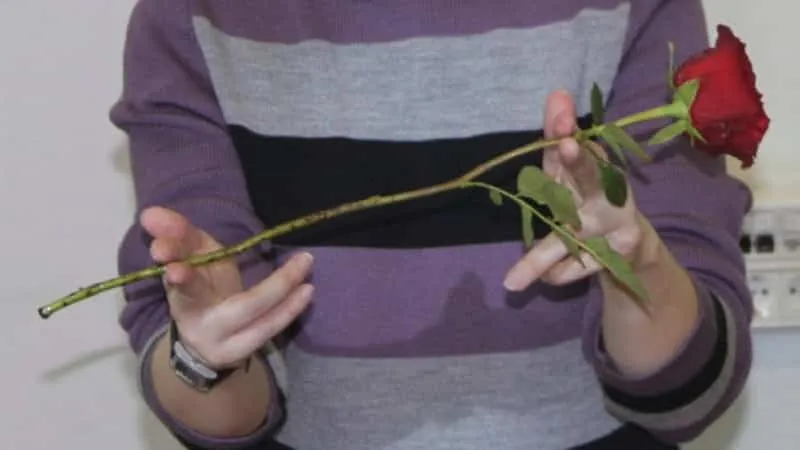
Even if the bouquet doesn’t meet these criteria, rooting is still worth a try. The chances of success may just be lower.
Note! Some gardeners prefer using stems from roses that have already begun shedding petals.
Selecting and Preparing Cuttings
Before taking cuttings, choose suitable stems:
- Presence of buds. The axillary buds should not be dry or fall off at a light touch.
- Woodiness of stems. Fully woody (brown) stems and overly flexible green stems are unsuitable. Semi-woody stems (common in bouquets) root best.
- Stem thickness. The ideal thickness matches a standard pencil.
- Appearance. Avoid stems with cracks, spots, or holes.
Ideally, the cutting should have 2–3 leaves. Rooting is still possible without them but will take longer.
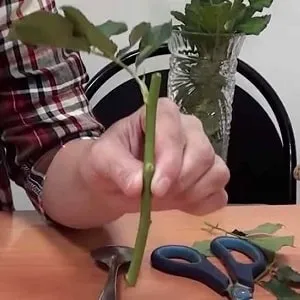 Use the upper or middle part. Cut a 15 cm stem with 3–4 healthy buds. Make a diagonal cut 1 cm below a bud and a straight cut 1 cm above the top bud.
Use the upper or middle part. Cut a 15 cm stem with 3–4 healthy buds. Make a diagonal cut 1 cm below a bud and a straight cut 1 cm above the top bud.- Remove the lower leaf, leaving only its stem. Trim the top leaves by half. Keep no more than 3 leaves and remove all thorns.
- Soak the cutting in a light pink potassium permanganate solution for 2 hours, then in a rooting stimulant for 24 hours.
Avoid the lower stem, as prolonged water exposure causes it to darken, crack, and swell.
Tip. Some gardeners seal the lower cut with paraffin wax.
Best Time for Rooting
Timing is crucial when propagating roses from a bouquet. It significantly affects rooting success.
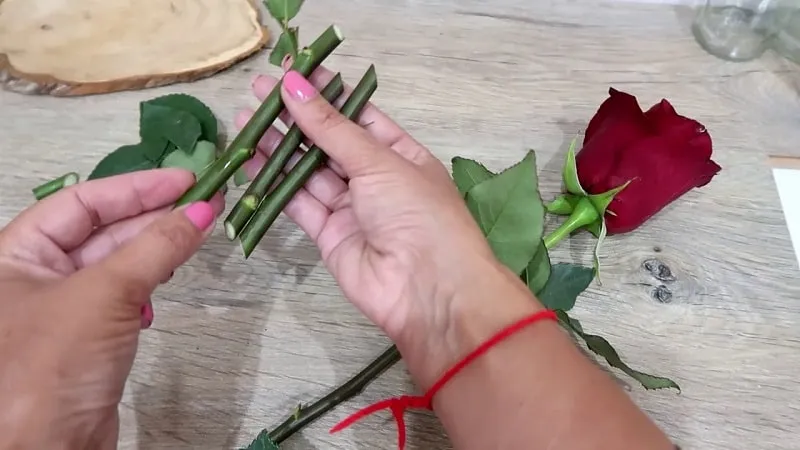
Ideal seasons for rooting:
- Summer. The best time, with a 90% success rate.
- Autumn. Early autumn works well (80% success), but chances drop to 50% as daylight shortens.
- Spring. Success rates range from 60–70%, improving closer to summer.
- Winter. The hardest season (30% success), though grow lights help.
Rooting Methods
Several techniques exist for rooting rose cuttings. Some are quite unconventional, yet all offer similar success rates.
In Water
Water propagation is the simplest method, requiring minimal materials. However, stems may rot if not treated properly.
Step-by-step guide:
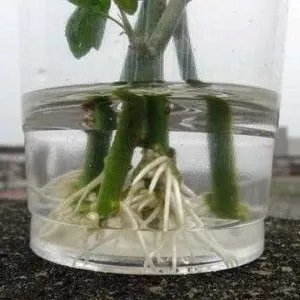 Fill a container with 3–4 cm of water. Add a pinch of potassium permanganate (for a light pink solution), "Trianum-P" (as directed), or "Fitosporin" (as directed) to prevent rot.
Fill a container with 3–4 cm of water. Add a pinch of potassium permanganate (for a light pink solution), "Trianum-P" (as directed), or "Fitosporin" (as directed) to prevent rot.- Cover the container with a plastic bag or bottle top and place it in a cool, bright spot.
- Ventilate daily for 15 minutes, misting the stem with room-temperature water.
- Change the water every 2 days (disinfection isn’t always necessary).
Roots typically form in 2 weeks. Transplant the cutting into soil afterward.
In Soil
Roses can also root directly in soil. First, let the bouquet sit in water for a day.
Use store-bought rose soil or a homemade mix of garden soil, sand, and peat (equal parts). Sterilize the soil with dark pink potassium permanganate or by baking it.
Steps for soil propagation:
- Fill a pot with soil and drainage. Add "Trianum-P" or "Fitosporin" at the base. Water thoroughly.
- Dip the cutting’s base in "RootBoost" or "Clonex Gel" before planting it upright.
- Cover with a plastic bag or bottle. Ventilate daily for 15 minutes.
- Place on a south-facing windowsill at room temperature. Water when the topsoil dries.
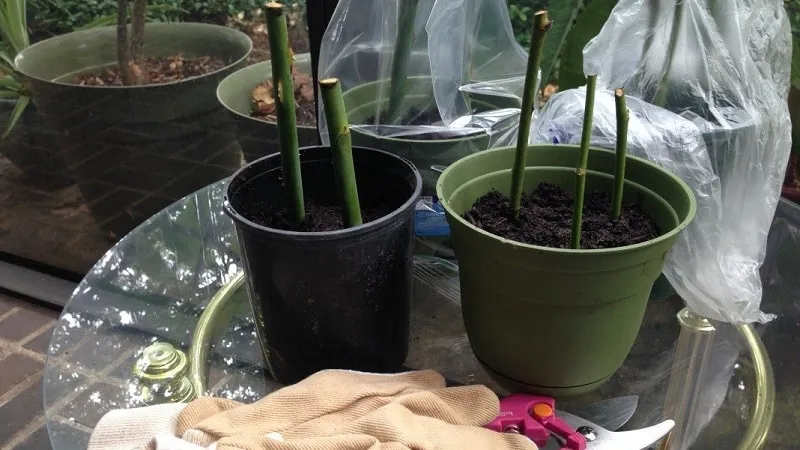
New leaves and shoots signal successful rooting. Gradually increase ventilation before removing the cover entirely.
Note! Prevent waterlogging by using pots with drainage holes and a gravel layer.
In a Potato
A unique method leveraging the potato’s moisture and nutrients.
How to do it:
- Choose a large, healthy potato. Remove all eyes.
- Poke a hole in the potato and insert the cutting.
- Bury the potato in soil, ensuring one bud is submerged.
- Water with sweetened water (2 tsp sugar per cup). Cover with plastic.
- Ventilate daily and mist the soil every 5 days.
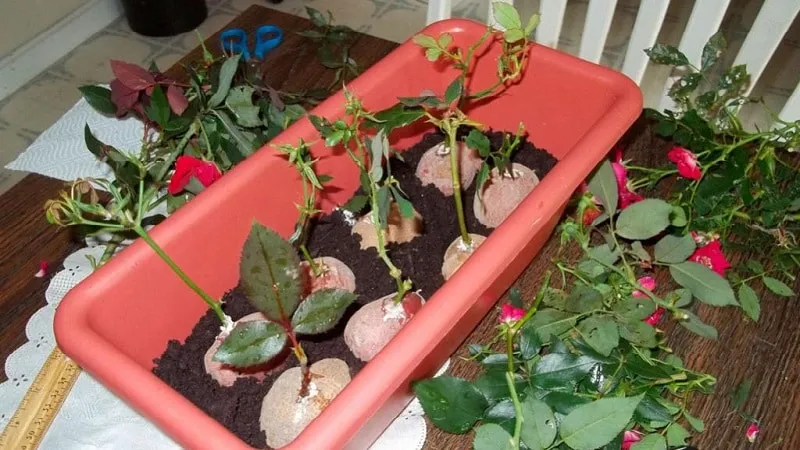
Once leaves appear, reduce cover time. Transplant after acclimatizing.
In a Bag
A space-saving method using newspapers and a plastic bag:
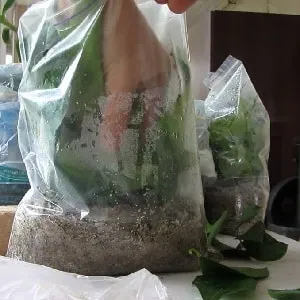 Layer shredded newspaper in a large bag. Some prefer crumpled whole sheets.
Layer shredded newspaper in a large bag. Some prefer crumpled whole sheets.- Soak the paper in water with "Fitosporin". Mist the bag’s interior.
- Dip cuttings in "RootBoost" powder and nestle them into the paper.
- Seal the bag and prop it upright. Ideal for multiple cuttings.
- Rehydrate the paper with sweetened water as needed. Mist the bag, not the cuttings.
- Ventilate daily for 15 minutes.
Transplant once roots develop.
Tip. Try different methods simultaneously for higher success.
How to Root a Rose: Step-by-Step
After roots form, transfer cuttings to pots:
- Fill a pot with drainage and soil. Water with light pink potassium permanganate solution and wait 24 hours.
- Plant the rose, burying it 1 cm above the roots.
- Cover with a plastic bag or jar. Ventilate for 15 minutes daily.
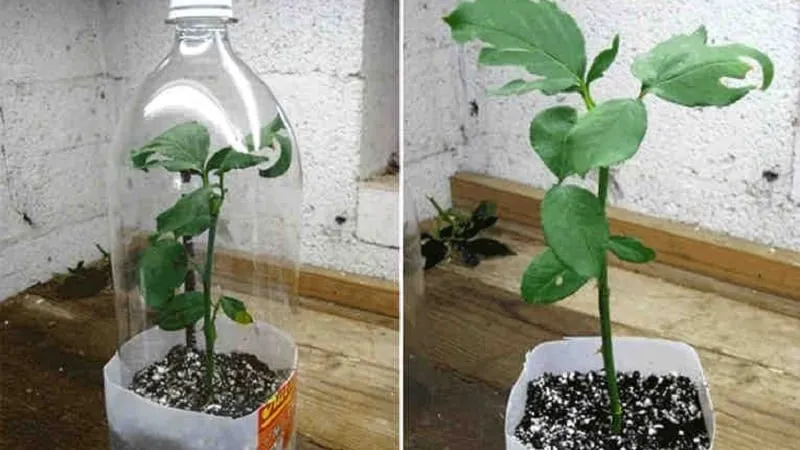
Grow at room temperature on a south-facing window. Remove the cover after leaves emerge, gradually increasing exposure.
Continue misting after uncovering. In winter, use a humidifier.
Fertilize monthly with flower-specific formulas or a mix of superphosphate, potassium sulfate, and ammonium nitrate.
If a Rose Roots Itself in a Vase
Roses that spontaneously root in water can also be planted:
- Separate the stem from the bouquet.
- Trim rotten roots, remove excess leaves, and shorten long stems to 5 buds.
- Plant in soil, water with rooting stimulant, and mist with "Epicot" solution.
When to Transplant Outdoors
Move roses outside the following year, in April or May after hardening them off.
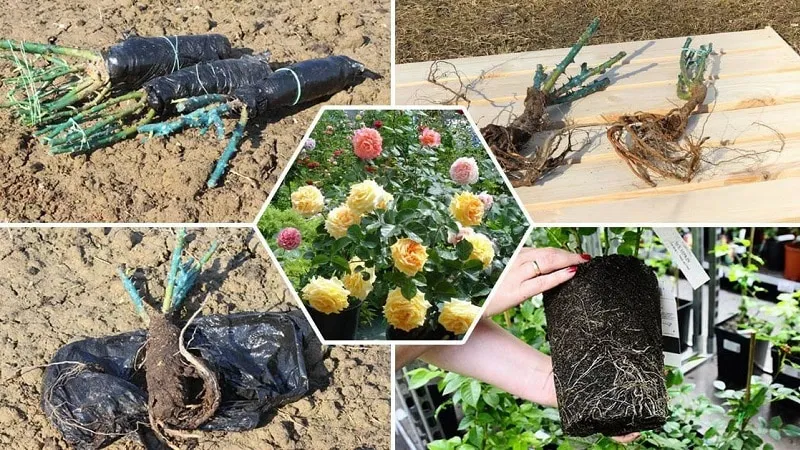
Choose a sunny, sheltered spot. Prepare the soil with compost (6 kg/m²), superphosphate (30 g/m²), and potassium sulfate (25 g/m²).
Dig holes matching the pot size. Plant without burying the graft union. Water well and cover at night initially.
If Cuttings Fail to Root
Failed rooting often stems from poor preparation or unsuitable varieties.
Note! Thick, reddish "water sprouts" root poorly.
Discard rotting cuttings and start fresh.
Using Rooting Stimulants
Stimulants boost success rates. Options for roses:
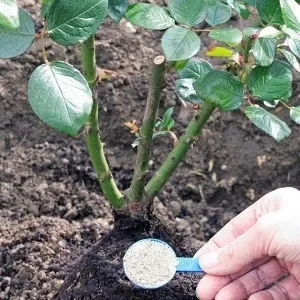 "Hormodin" (50 mg per liter).
"Hormodin" (50 mg per liter).- "Zircolite" (0.1 mg per liter).
- "RootBoost" (use as powder or solution).
- Honey water (1 tsp per cup).
- Aloe vera juice (diluted 1:1 with water).
Soak cuttings for 24 hours, then use the solution for occasional watering.
Tips from Expert Gardeners
Pro advice for better results:
- Sphagnum moss aids rooting — soak before use.
- Soil propagation is faster and less rot-prone than water.
- Always use pots with drainage holes.
Conclusion
Rooting roses from a bouquet extends their beauty for years. While the process is straightforward, success depends on factors like season, variety, and cutting freshness. For best results, propagate multiple stems at once.







